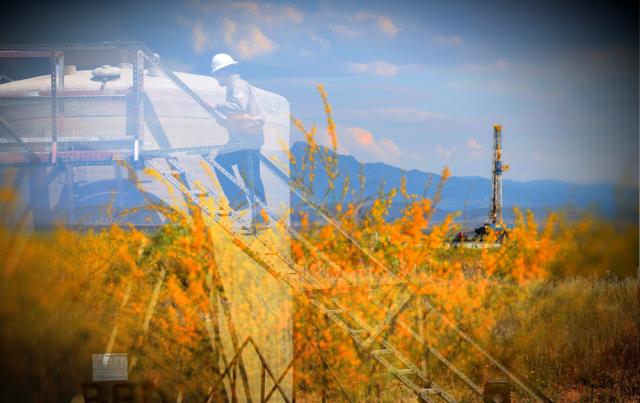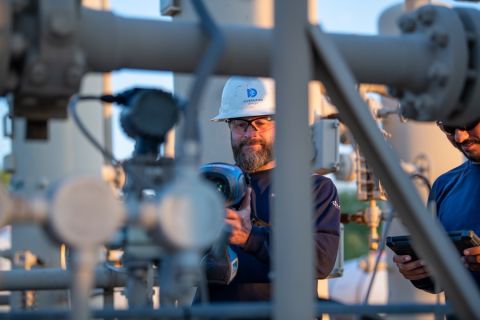
Apache has been operating in the Permian Basin of Texas and New Mexico since the 1990s. As of year-end 2020, the company had more than 7,000 wells covering a gross acreage position of 4.9 million acres with exposure to numerous plays primarily located in the Midland Basin, the Central Basin Platform/Northwest Shelf and the Delaware Basin. (Source: Hart Energy)
Apache Corp. reached its goal on Oct. 11 to end routine flaring in its U.S. onshore operations, a cornerstone of the 2021 ESG goals set by its parent company Houston-based APA Corp.
Going forward, future wells in the U.S. onshore will not be brought online by Apache without adequate gas takeaway capacity, according to John J. Christmann IV, APA’s CEO and president.
“In early 2021, we set out to eliminate routine flaring in U.S. onshore operations as part of our broader efforts to continuously reduce our environmental footprint,” Christmann commented in the release. “We established an aggressive goal, and I am proud to announce we have achieved the goal ahead of schedule.”
Founded in 1954, APA owns consolidated subsidiaries that explore for and produces oil and gas in the U.K., U.S., Egypt and offshore Suriname. The company’s U.S. operations, which are primarily focused in the Permian Basin, are managed by Apache.
In early 2021, APA announced new ESG goals that tie directly to incentive compensation for all employees and are aligned with the company’s ESG focus areas of air, water, communities and people. A cornerstone of the 2021 ESG goals was the elimination of routine flaring in U.S. onshore operations by the end of 2021.
APA credited its ability to reach its flaring goal three months ahead of schedule to the capacity investment made by Apache’s majority-owned midstream company, Altus Midstream, prior to 2021.
According to the company release, Altus Midstream invested more than $850 million in two new natural gas pipelines, and Apache made firm transportation commitments on both pipelines to help underwrite and ensure construction of that infrastructure. These efforts significantly reduced the practice of flaring for operators throughout the Permian Basin, the company release said.
“We attained the goal through a concentrated effort, which included communicating clear objectives along with adding compression and optimizing facilities so more gas could enter the gathering system for sale,” Christmann added.
APA also announced on Oct. 11 that it is tracking ahead of other U.S. onshore environmental goals this year, including overall flaring intensity of less than 1% of gas produced and limiting freshwater consumption to less than 20% of total water use.
“Our collective challenge as an industry is reducing emissions while continuing to deliver the abundant, reliable energy the world needs,” Christmann continued. “We are committed to the responsible production of natural gas and oil and helping to elevate people around the globe to higher standards of living.”
Recommended Reading
Darbonne: ESG, ‘Oh So 2022,’ Reduced to Table Stakes?
2024-02-11 - ESG champion BlackRock is paring, while Exxon Mobil’s growing. Today, ESG is just table stakes.
Women in Energy: Here’s to Ms. Flat-Bottomed Paper Bag Inventor
2024-03-10 - A salute to the women of genius, including ‘Ms. Plain English Computer Language Inventor’ and ‘Ms. Parity is Not Conserved in Weak Interaction Discoverer.’
Hart Energy’s Influential Women in Energy: A Woman of G.R.I.T.
2024-03-07 - When Lara Jones was at her lowest point, she developed a system to transform her fears into action. Now, her mission is to share what she learned.
Women in Energy: Diversify or Die
2024-03-08 - The oil and gas industry may be at risk of losing the innovation race if women remain sidelined.
Keeping it Tight: Diversified Energy Clamps Down on Methane Emissions
2024-04-24 - Diversified Energy wants to educate on emission reduction successes while debunking junk science.





